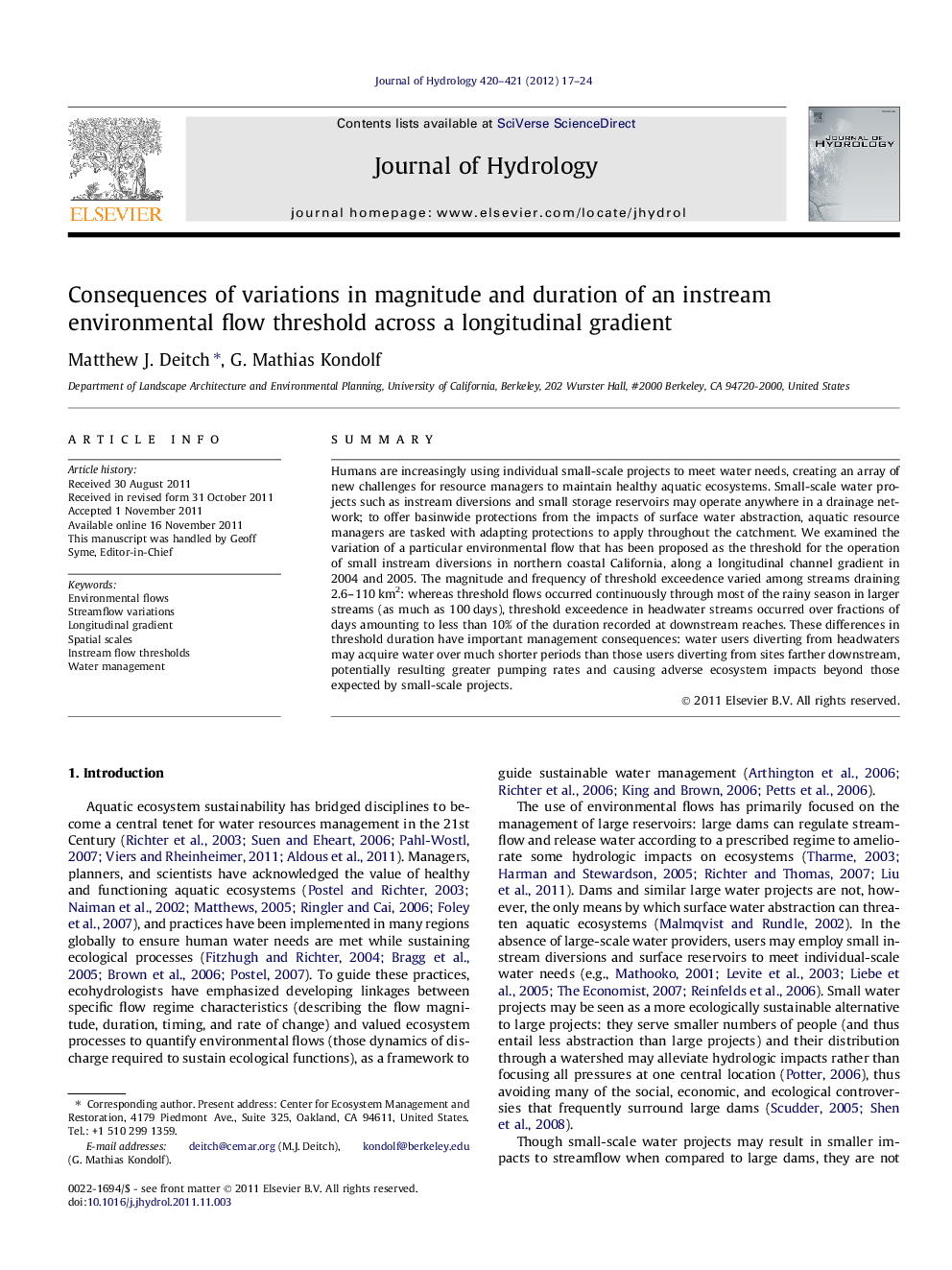| Article ID | Journal | Published Year | Pages | File Type |
|---|---|---|---|---|
| 4577151 | Journal of Hydrology | 2012 | 8 Pages |
SummaryHumans are increasingly using individual small-scale projects to meet water needs, creating an array of new challenges for resource managers to maintain healthy aquatic ecosystems. Small-scale water projects such as instream diversions and small storage reservoirs may operate anywhere in a drainage network; to offer basinwide protections from the impacts of surface water abstraction, aquatic resource managers are tasked with adapting protections to apply throughout the catchment. We examined the variation of a particular environmental flow that has been proposed as the threshold for the operation of small instream diversions in northern coastal California, along a longitudinal channel gradient in 2004 and 2005. The magnitude and frequency of threshold exceedence varied among streams draining 2.6–110 km2: whereas threshold flows occurred continuously through most of the rainy season in larger streams (as much as 100 days), threshold exceedence in headwater streams occurred over fractions of days amounting to less than 10% of the duration recorded at downstream reaches. These differences in threshold duration have important management consequences: water users diverting from headwaters may acquire water over much shorter periods than those users diverting from sites farther downstream, potentially resulting greater pumping rates and causing adverse ecosystem impacts beyond those expected by small-scale projects.
